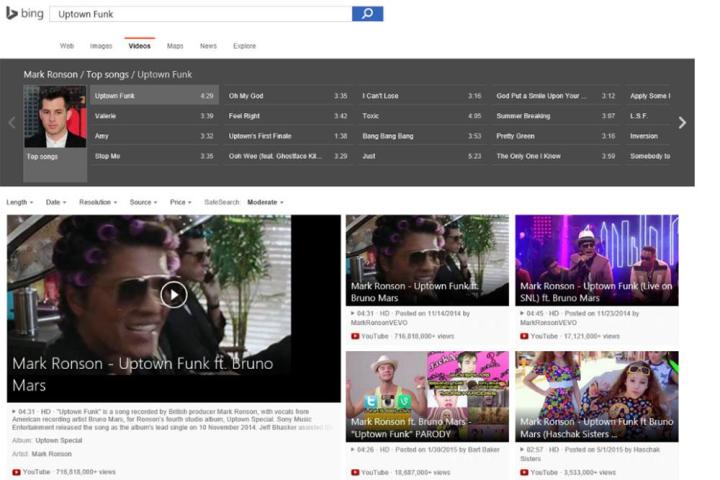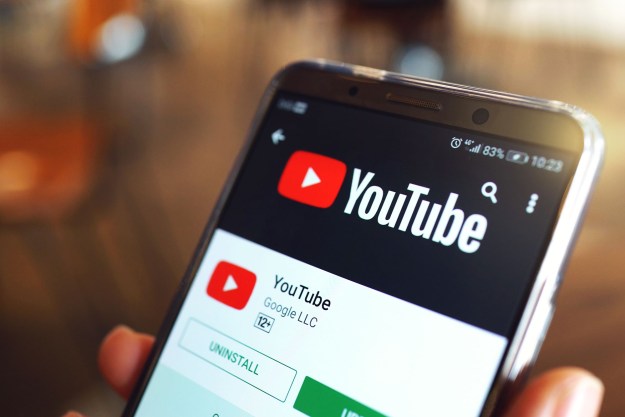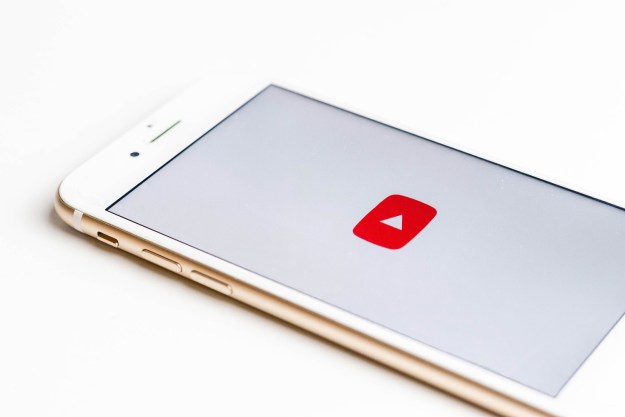
When most people are looking for a video, they’ll either head straight to YouTube, or start with a Google search. Microsoft is looking to change that with a recent overhaul to its Bing video search. While the old video search was clunky and dated-looking, the new update gives the UI an overhaul with bigger images and a more touch-friendly design.
For many people, YouTube does double duty as a replacement for music streaming services like Spotify, so Microsoft has focused on improving search results for songs. Now results show a “hero” image — an enlarged thumbnail of the most relevant result. This video can be played in place, even as users continue clicking through to a separate video page if they wish.
If the video you’re looking for isn’t shown as a “hero” result, the updated Bing still makes the right video easier to find by showing more information for each of the results that do appear. Information like the channel that uploaded the video, view count, and the date the video was uploaded all make it easier to find the right video as opposed to a knockoff.
Related searches have been moved inline with the original search, so you’ll have a better idea of where to go next as you look through the results. Once you reach the bottom of the page, you’ll see even more suggestions. Users can also now get a preview of videos without clicking on them — hovering the cursor over a video will play a short snippet.
Of course, Google’s video search is still fine, and will likely remain the go-to destination for many people, even if only because it’s what they already use. With this latest update, however, Bing has thrown down the gauntlet in improved service. Now it’s Google’s turn to respond.
Editors' Recommendations
- How to save your data from Google’s purge of inactive accounts
- This Bing flaw let hackers change search results and steal your files
- This new Microsoft Bing Chat feature lets you change its behavior
- Forget text-to-image; this AI makes videos from your prompts
- YouTube brings pinch to zoom and video navigation changes to everyone

